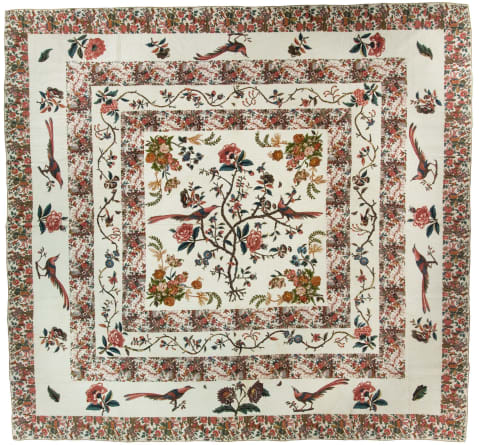Tree of Life
Tree of Life
Circa 1790-1810
Probably made in the United States
Purchase made possible through the Robert and Ardis James Acquisition Fund, 2007.034.0001
The tree of life motif is universally recognized as a symbol of healing, immortality and protection. It became fashionable when Indian palampores—printed and painted cotton textiles for bed coverings and bed hangings—were imported to Europe beginning in the 17th Century. The tree of life, or a stylized version of it, was the favored quilt design of American quiltmakers from approximately 1775 to the 1820s.
In addition to the slender tree of life and long-tailed birds featured in this quilt, the maker fashioned borders with fabric that depicts latticework gates and unusual vases and urns. Designs such as these were known as chinoiserie, from the French word 'chinois,' meaning Chinese. Images inspired by art and design from China, Japan and other Asian countries were freely re-interpreted through the addition of exaggerated, imaginary details. The style became popular during the mid-1700s.
This quilt is nearly eleven feet square. Such sizable spreads were needed to cover fashionable four-poster beds often piled high with feather mattresses or ticks and accommodating a trundle bed beneath.
















